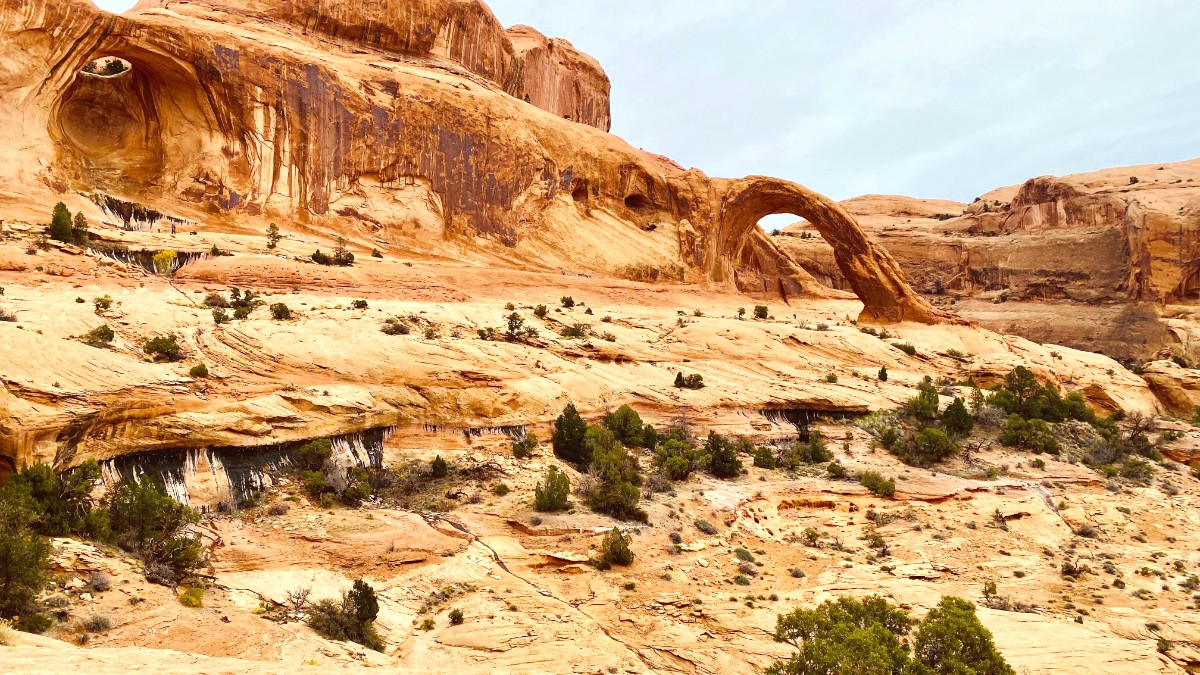
Southwest, USA
Moab connects visitors with raw, untamed beauty and discovers the limits of one's spirit. This corner of the American Southwest presents memorable experiences, whether you seek peaceful solitude or high-adrenaline challenges. Prepare for a journey into a landscape unlike any other, where every turn shows a new wonder.
Moab’s geological foundation is a complex mix of ancient seabeds, salt deposits, and vast sandstone layers. Over millions of years, tectonic forces uplifted these layers, and erosion, mainly from water and wind, sculpted them into the iconic formations seen today.
Salt dissolution and movement created instability, leading to the formation of arches, fins, and domes. This geological activity results in a landscape drawing geologists, photographers, and outdoor enthusiasts.
Moab’s history spans millions of years, beginning with the age of dinosaurs. The region contains one of the richest collections of dinosaur fossils and tracks in the world. Paleontologists continue to unearth new discoveries, providing insights into the ancient creatures that once roamed this land. Evidence of their presence exists in numerous track sites, visible on the rocks themselves. This geological history defines Moab's character as a place of deep time and ancient wonders.
Ancestral Puebloans, Fremont people, and later Ute, Paiute, and Navajo tribes lived in and traveled through these lands. They left behind a rich legacy of rock art—petroglyphs and pictographs etched onto canyon walls—and remnants of their dwellings. These markings tell stories of their lives, beliefs, and interactions with the natural world, representing a profound connection to the landscape. Do not touch or disturb any rock art or archaeological features.
European and American settlers arrived in the 1870s, drawn by fertile land along the Colorado River. The town was named "Moab" in 1880.
The discovery and mining of uranium brought an economic boom, making Moab a hub for miners and associated industries.
Construction of major roads like US-191 and I-70 connected Moab to wider regions.
After mining declined, Moab became a tourism and outdoor recreation destination, drawing adventurers globally.
Mountain bikers, rock climbers, rafters, and hikers find immense potential in the area's dramatic landscapes.
The region’s hydrology is dominated by the Colorado River, a lifeline for wildlife and a playground for rafters and paddlers. Numerous intermittent washes and dry streambeds crisscross the landscape, channels for sudden, powerful flash floods during monsoon season.
Moab is the main base for exploring Arches National Park (5 miles north) and Canyonlands National Park (Island in the Sky district, 30 miles northwest). Dead Horse Point State Park is also nearby.
The La Sal Mountains, with peaks over 12,000 feet, rise dramatically to the east. These mountains present cooler hiking and mountain biking opportunities during hot summer months.
Visiting the Moab Museum or Dan O'Laurie Canyon Country Museum brings excellent background on the region's rich history, from dinosaurs to early settlers.
Moab presents a spectrum of activities set against some of North America's most iconic red rock scenery. This area draws visitors from around the globe, all seeking to experience its unique blend of adventure and natural beauty.
Moab's appeal is its diverse offerings. Plan your visit considering the season and your desired activities to maximize your experience.
Distinct seasons with wide temperature swings. Summers are hot, winters are cold. Spring and fall present mild, pleasant temperatures.
Arches National Park, Canyonlands National Park, Dead Horse Point State Park, Colorado River, La Sal Mountains.
Hiking, Mountain Biking, Whitewater Rafting, Off-roading, Rock Climbing, Photography & Stargazing.
Moab presents a range of lodging, from budget-friendly campgrounds and motels to mid-range hotels and luxury resorts. Vacation rentals are popular too.
Mild to warm temperatures (60-80°F). Moderate precipitation. Pleasant for activities. Wildflowers bloom. High season, crowded.
Mild to cool temperatures (50-80°F). Low precipitation. Pleasant for activities. Fall foliage. High season, crowded.
Summer: Hot (90°F+). Winter: Cold (30-50°F). Low season, fewer crowds (except for water activities in summer).
Rapidly occurring, especially during summer monsoon (July-Sept). Slot canyons and washes present risks. Exit low-lying areas if rain begins. Do not camp in washes.
Summer heat dictates significant hydration and activity planning. Winter cold necessitates appropriate layering. Carry more water than you think is necessary in summer. Pack warm, synthetic layers in winter.
High winds cause these, reducing visibility and air quality. Seek shelter if a dust storm happens.